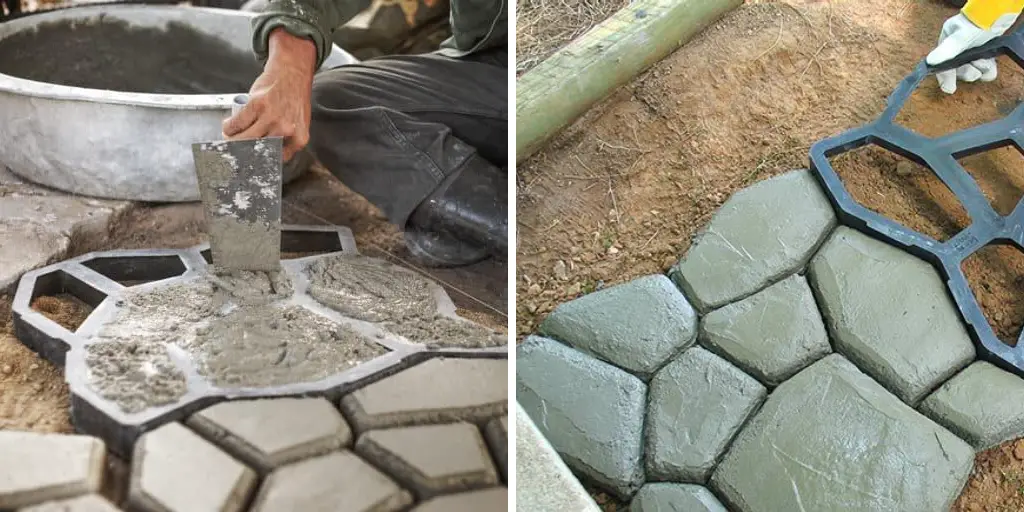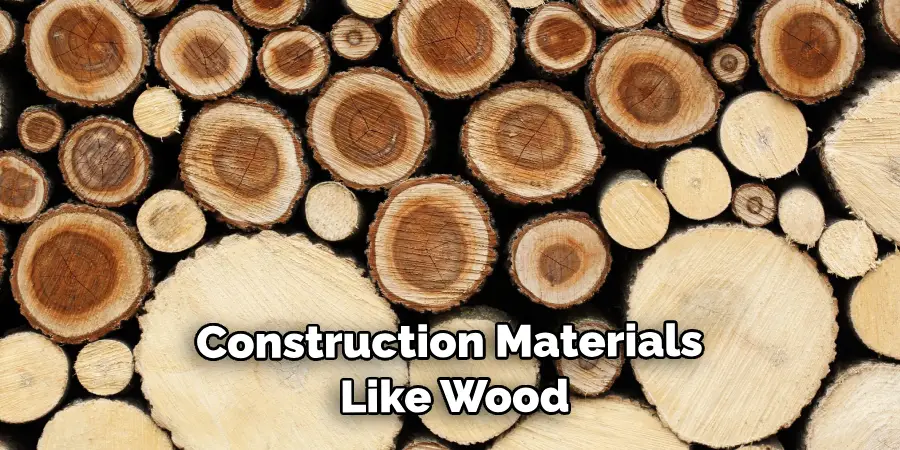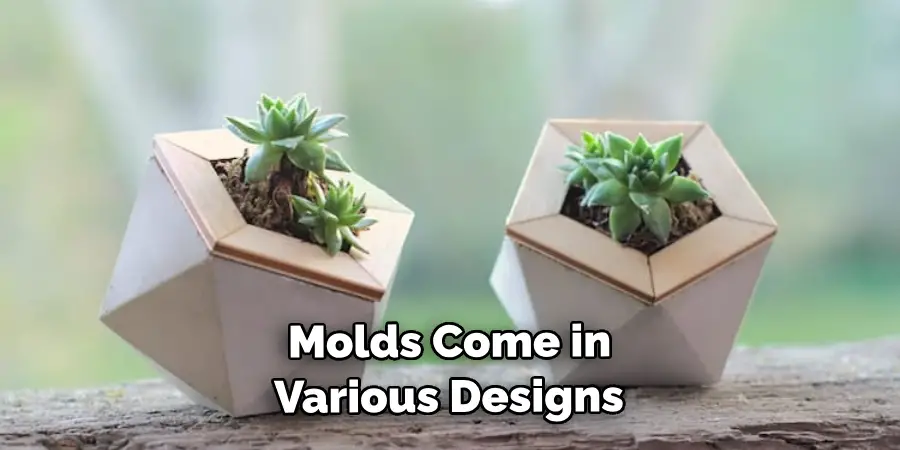Unlocking the versatile potential of concrete for creative projects becomes significantly more accessible with the use of concrete molds. These molds offer a gateway to crafting custom and visually striking concrete structures, from stepping stones and garden edging to decorative tiles and intricate statuary.
In this article, we will explore the art and technique of utilizing concrete molds, providing insights into the various types available, the materials needed, and the step-by-step process for successful molding.

Whether you’re a seasoned DIY enthusiast or a novice looking to embark on your first concrete adventure, understanding how to use concrete molds opens up a realm of possibilities for personalized design and functional construction.
From simple molds for beginners to more intricate designs for advanced craftsmen, this guide will navigate through the essentials, empowering individuals to turn their concrete visions into tangible, aesthetically pleasing creations.
Benefits of Using Concrete Molds
Concrete molds have been used for centuries to create beautiful and functional concrete structures. From ancient civilizations to modern day construction, concrete molds offer a wide range of benefits that make them a popular choice among builders and DIY enthusiasts alike.
Versatility:
One of the biggest advantages of using concrete molds is their versatility. They can be used to create a variety of shapes and designs, making them suitable for any type of project. Whether you’re looking to create a simple stepping stone or a complex garden sculpture, concrete molds can help you achieve your desired result.
Cost-effective:

Compared to other construction materials like wood or stone, concrete is relatively inexpensive. And when combined with the cost-effectiveness of using molds, it becomes an even more budget-friendly option. Concrete molds can be reused multiple times, making them a cost-effective choice for both small and large scale projects.
Durability:
Concrete is known for its durability, and when used with high-quality molds, it can withstand the test of time even in harsh weather conditions. This makes it a reliable choice for outdoor structures like patios, walkways, and retaining walls.
Easy to Use:
Whether you’re an experienced builder or a novice DIYer, using concrete molds is a simple and straightforward process. With the right materials and techniques, anyone can create professional-looking concrete structures without much hassle.
10 Methods How to Use Concrete Molds
1. Create a Garden Path
Concrete molds can be used to create an attractive and durable garden path. Simply lay down the mold, fill it with concrete, and allow it to dry before removing the mold. This is a great way to add a unique look to your garden while also creating a sturdy walkway that will last for years.
2. Make Garden Pots

Concrete molds can also be used to make garden pots or planters in any shape or size. Simply fill the mold with concrete and let it dry before removing it from the mold. Once removed, you can paint the pot in any color you like or simply leave it as is for a more natural look.
3. Create Patio Tiles
Concrete molds can be used to create patio tiles in any shape or size you desire. Simply lay down the mold, fill it with concrete, and allow it to dry before removing the mold. Once removed, you can use these tiles to create a stunning patio area that will last for years.
4. Make Stepping Stones
Stepping stones are an attractive addition to any yard and they are easy to make with concrete molds. Simply fill the mold with concrete and allow it to dry before removing it from the mold. Once removed, you can decorate them however you like or simply leave them as is for a more natural look.
5. Build Retaining Walls
Retaining walls are an attractive way of adding height and definition to your landscape design without taking up too much space or blocking views of your garden or lawn area. Concrete molds can be used to build retaining walls quickly and easily by filling them with concrete and allowing them to dry before removing them from the mold.
6. Create Fountains
Fountains are an elegant addition to any outdoor space, and they are easy to make using concrete molds as well! Simply fill the molds with concrete and allow them to dry before removing them from the mold, then assemble them together into a fountain shape of your choice!
7. Make Bird Baths
Bird baths are both decorative and functional additions that help attract birds into your yard while providing them with water for drinking or bathing in during hot summer days! To make one using concrete molds, simply fill the molds with concrete and allow them to dry before removing them from the mold, then assemble them together into a bird bath shape of your choice!
8. Make Fire Pits

Fire pits are great additions for outdoor entertaining areas as they provide warmth on cool nights while also creating an inviting atmosphere for friends and family alike! To make one using concrete molds, simply fill the molds with concrete and allow them to dry before removing them from the mold, then assemble them together into a fire pit shape of your choice!
9. Create Benches & Tables
Benches & tables made out of concrete provide both function & style in outdoor spaces – perfect for entertaining guests outdoors! To make one using concrete molds, simply fill the molds with concrete and allow them to dry before removing them from the mold, then assemble pieces together into benches & table shapes of your choice!
10. Make Statues & Sculptures
Statues & sculptures made out of concrete provide both beauty & interest in outdoor spaces – perfect for adding character & personality outdoors! To make one using concrete molds, simply fill the molds with concrete and allow them to dry before removing them from the mold, then paint or decorate them to your liking!
Things to Consider When Choosing Concrete Molds

- Material: The type of material used in making the mold is important. Silicone, plastic, and latex are some common materials used for concrete molds. Each material has its own advantages and disadvantages, so it’s important to consider your needs and preferences when choosing a mold.
- Design: Concrete molds come in various designs and shapes, from traditional square or rectangular shapes to more intricate and detailed designs. Consider the purpose of your project and choose a mold that best suits your needs.
- Size: The size of the mold is another important factor to consider. Depending on the size of your project, you may need a larger or smaller mold. It’s also important to consider where you will be using the mold, as some molds may be too large for indoor use.
- Durability: You want a mold that will last through multiple uses without breaking or losing its shape. Make sure to read reviews and choose a mold from a reputable brand to ensure durability.
- Cost: Concrete molds can vary in cost, so it’s important to consider your budget when choosing one. Keep in mind that higher quality materials and intricate designs may come at a higher price.
Common Mistakes to Avoid When Using Concrete Molds
When using concrete molds, it is important to understand the process and techniques involved in order to achieve a successful outcome. However, even experienced individuals can make mistakes that may compromise the quality of their project. In this section, we will discuss some common mistakes to avoid when using concrete molds.
Not Preparing the Mold Properly
One of the most common mistakes made when using concrete molds is not preparing them properly. It is important to thoroughly clean and grease the mold before use, as any debris or residue can affect the final result.
Furthermore, applying a release agent such as petroleum jelly or cooking spray can prevent the concrete from sticking to the mold and make it easier to remove once it has cured.
Mixing the Concrete Incorrectly
Another mistake that many individuals make is not mixing the concrete correctly. It is crucial to follow the manufacturer’s instructions and use the correct ratio of water to concrete mix. Too much or too little water can result in a weak and brittle mold, which may break easily.
Not Using Reinforcement
Reinforcement such as wire mesh or rebar is often necessary when using concrete molds to ensure the strength and durability of the final product. It is important to place reinforcement in strategic areas, especially for larger or more intricate projects.
Conclusion
To wrap it up, if you’re looking for an easy and cost-effective way to complete your next home project using concrete molds, you now have all the resources necessary to take on the task. Whether it’s pouring a patio or creating an intricate stone veneer, when equipped with the right tools and skills, you can make your ideas come to life.
Remember that the key is to practice temperance and measure twice— so that you only have to cut once! Buy quality supplies from trusted retailers and use our helpful guide as a reference and be sure to follow all instructions carefully. With these steps in mind, any homeowner can confidently take on a project about how to use concrete molds!
